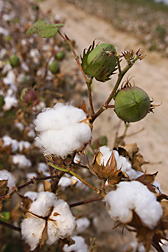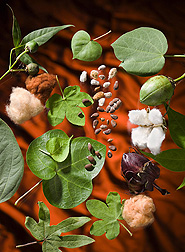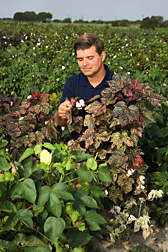|
The Svalbard Global Seed Vault is built deep inside a mountain
|
This week sees the formal opening of a vault designed to protect and preserve samples of valuable seeds. The “doomsday” vault in Svalbard can store more than four million batches of seeds, including the world’s major crop varieties. BBC environment correspondent Sarah Mukherjee is in Svalbard for the opening.
TUESDAY 26 FEBRUARY: THE BIG DAY
So – today’s the day that the seed vault opens. All the months of planning and preparation by the various press offices, that, in my experience, will almost always end in tears – for someone.
 |
The opening of the “fail-safe” vault attracted a number of VIPs
|
And the more people involved, in different countries, with different priorities, the bigger the lake of woe you end up trying to navigate.
We had done the bulk of our broadcasting yesterday, for that very reason. Take, for example, a conversation last night I overheard between two of the organisers:
“I wonder whether it’s going to be a little claustrophobic in the vault – with 300 people in there.”
“300? I was told 150!”
There’s going to be a lot of journalists shouting before the end of the day, I predicted to a tall, blond Norwegian government official. “Oh, yes” he said, cheerfully.
This was after our interview live on the World Service with the Norwegian Prime Minister, Jens Stoltenberg.
We were setting up our equipment when a tanned, tall and very good looking man bounded up the stairs. Thinking he was a part of the advance security detail, I didn’t take much notice – but thought it was probably wise to be friendly.
“Hiya – I’m Sarah”
“Hello! I’m Jens”

Sarah interviews Norway’s Jens Stoltenberg
|
Now, obviously, being a consummate professional, I left it to the other female journalists to remark on Mr Stoltenberg’s handsomeness.
The thought did not even cross my mind that maybe I could suggest we were having technical difficulties, and the only way we could interview him would be to share a mic – which would mean I would have to sit on his lap.
I don’t have sexist, frivolous thoughts like that. I stuck to the issues.
Mr Stoltenberg told me that he has seen how his country is changing and getting warmer. “The vault is something we can do for the world” he says.
As he leaves, I notice that he and all his officials have matching cold weather outerwear. Red jackets and trousers, emblazoned with the Norwegian flag.
The overall effect is pretty impressive, like a sort of political Olympic team. I wonder whether the British Cabinet has thought of this.
MONDAY 25 FEBRUARY: INSIDE THE VAULT
I am sitting in the bar of our hotel, looking out at the heavy snow whirling about outside (and yes, dear reader, I do have a very small restorative at my side).
Around me, people are in smart suits and holding glasses of champagne. They’re off to the celebratory dinner tomorrow with, among other people, the prime minister of Norway.

The vault looks a little like something from a 1970s Bond film
|
We’ve spent a lot of the day in the vault. An interesting drive, mainly over ice, which our cameraman, Paul, relished – he has done the BBC’s all-terrain driving course, and it is not that often that you actually get to test it out. But why he couldn’t drive on the roads was beyond me.
The vault itself is a cross between something out of a 1970s Bond film and the tunnel that connects all the museums at South Kensington, London. Only that, of course, that tunnel is not cut into the permafrost.
The entrance is dark grey concrete with a sort of cracked glass top, which they light up at night. An armed guard stands outside – to fend off polar bears, apparently – with an ice sculpture of a polar bear by the side of the entrance (which I think is part of the opening ceremony, and not for target practice).
Ice sculptures
Large microphones have already been set up in front of the polar bear, so he may well be broadcasting to a grateful nation as well.
Once through the entrance, a long tunnel leads down into the permafrost, and an entrance chamber that appears to have been plastered in Artex. To add to the Austin Powers feel of the whole thing, ice sculptures back lit with blue lights were dotted about as part of the opening event.

The polar bear ice sculpture – the centre of attention
|
We are allowed inside one of the vaults, but I wouldn’t recommend it. Giant fans suck out all the available moisture, and it’s a steady -20C.
After 20 minutes, Paul’s hands had stopped working and we had to get the charcoal hand warmers out, and a combination of my face and my brain freezing simultaneously meant I was quite literally lost for words.
We’re interviewing Cary Fowler, the vault’s director, and I have to do the introduction 20 times or more as I feel the IQ points gelatinising (if that’s a word) in my head. Looking back at the tape when we come to edit, I see Dr Fowler’s face. This time, he’s the one who looks like he’s going to cry.
One of the most striking things about Svalbard is the weather. As we prepared for the trip, the producer, Keith, was tearing his hair out trying to prepare for the trip while watching a Longyearbyen weather website. “It’s changing every hour! What do we take?” he kept asking. Every hour, seemingly, the weather forecast changed.
And it certainly does. This morning, it was heart-liftingly clear and beautiful, the snow-covered mountains crystal clear in a blue-pink sky. Half an hour later, said mountains were obscured by biting, whirling snow. Amazing – but I’m glad I’m just a visitor.
SUNDAY 24 FEBRUARY: CHILLY WELCOME
“There are flowers in my garden already; it’s very mild.”

The seeds will be stored in vaults at the end of a 125m long tunnel
|
Professor Tore Skroppa, director of the Norwegian Forest and Landscape Institute, casts his mind back to his garden north of the Norwegian capital, Oslo.
We find ourselves sitting next to each other on the flight from Oslo to Longyearbyen, the capital of Svalbard – the most northerly scheduled flight in the world.
As we pass over one breathtaking view after another, brilliant white peaks set in glittering cobalt seas, the professor points out that much of this water should be ice at this time of year.
He has been going up regularly to see the progress of the vault, set more than 200m deep within the permafrost.
But it’s those flowers in his garden that worry him at the moment. “There should be more than a metre of snow in Oslo at the moment – there’s hardly any in places.”
Climate change is one of the reasons the vault has been created – but by no means the only one.
Professor Skroppa points out those more than 40 countries have had some or all of their seed banks destroyed in recent years – whether through war, as in Afghanistan and Iraq, or through floods or other natural disasters, as in the Philippines.
The mountains get higher and whiter, and the sea looks oilier – almost gelatinous in places – but still not frozen.
But as we leave the plane, the cold – all -13C (9F) of it, plus a whipping wind to drive the temperatures down a good few degrees more – doesn’t so much whack you, as sucker punch you.
This isn’t so bad, you think – and then you realise, on the short walk from the plane to the arrivals hall, that you’ve lost all feeling in your toes.
Longyearbyen has very much a frontier feel to it, all low-rise wooden houses and lots of unidentifiable buildings made mainly of pipes (and men with guns to scare the polar bears away. Really.)
Indeed, it used to be a mining town – although only one of the coal mines is still working.
The loss of feeling rises towards my knees as I follow our cameraman, Paul, around, as we try to get as many pictures in the can as possible before we lose what little light there is (we’re so far north that the Sun in fact sets in the south, although “sets” isn’t quite the right word anyway as it never really rises at this time of year).
I don’t want to look like a big girl’s blouse and hide, crying because my nose feels like it’s about to fall off, in the car.
But then again, that’s what I really, really want to do – especially when we stop to film the frozen part of the fjord and it starts snowing.
In the distance, I see a young couple strolling down the snow-covered main street with a pram. I’m a big girl’s blouse.
I make up some excuse about having to call London, and go and sit in the car. And cry.













